Gallery Network
7 Questions for Painter Rod Penner on Capturing the ‘Quiet Poetry’ of Desolate Texas Landscapes
Following on the heels of a recently published monograph, the artist's solo show opens at Louis K. Meisel Gallery later this month.
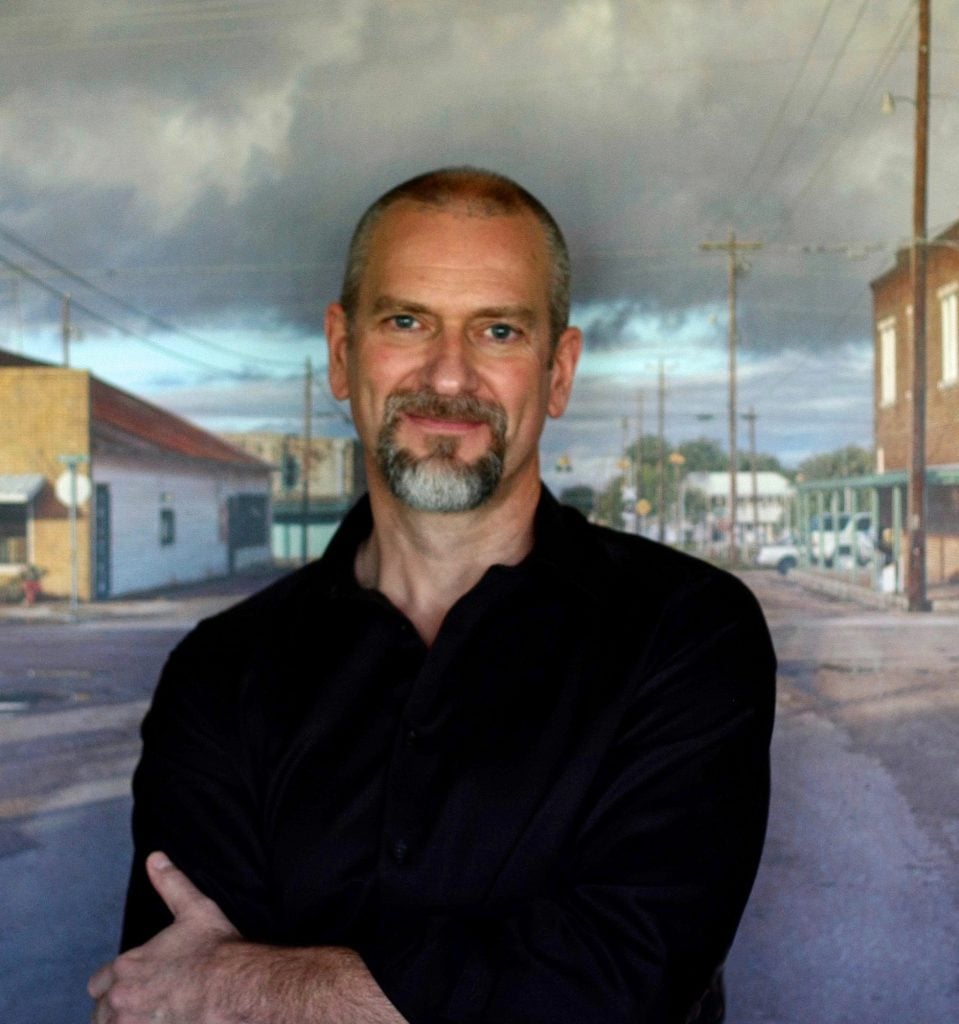
Following on the heels of a recently published monograph, the artist's solo show opens at Louis K. Meisel Gallery later this month.

Artnet Gallery Network

Canadian-born, Texas-based artist Rod Penner is recognized for his realist acrylic-on-canvas paintings that portray often overlooked or abandoned scenes in rural Texas. Devoid of human figuration and rendered with extreme attention to architectural and landscape detail, the photo-informed compositions not only convey a sense of meditative contemplativeness but also the artist’s meticulous technical skill.
Recently, the Artist Book Foundation published a career survey monograph tracing 35 years of Penner’s work, Rod Penner, Paintings 1987–2022. The publication coincided with the exhibition “Rod Penner: Main Street Mystique,” presented at the foundation’s dedicated space on the campus of MASS MoCA in North Adams, which is also the site of a book signing and discussion with the artist that will be held on March 11. Later this month, Louis K. Meisel Gallery in New York will present the solo show “Rod Penner: Small Town Meditations,” which will run from March 18 through April 29, 2023.
Amidst all of these happenings, we spoke with Penner about his new monograph and his artistic inspirations and process.
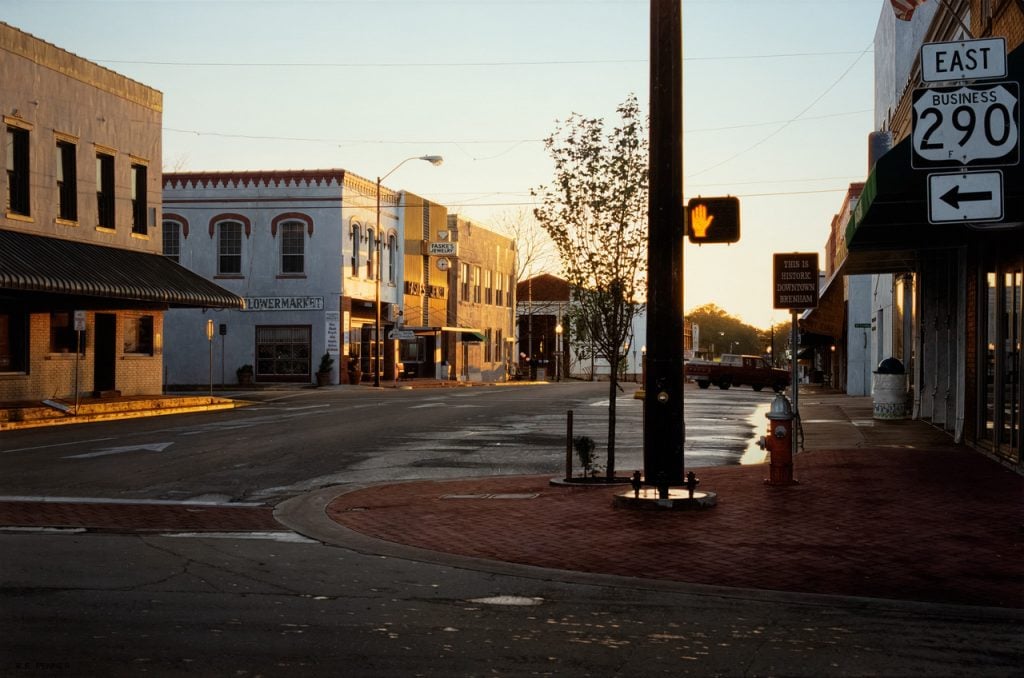
Rod Penner, 290 East / Brenham, TX (2008). Courtesy of Louis K. Meisel Gallery.
Your work is recognized for depicting small-town Texas, specifically desolate scenes and landscapes. What first inspired this focus in your work?
In the winter of 1988, we moved back to Texas, my wife’s home state, after the death of her younger brother. The stark landscape and unpretentious beauty of small-town Texas resonated with me and provided subject matter that I found strangely evocative.
It is interesting that your work is described as “photo-informed” rather than “photorealistic.” Can you tell us a bit about your process, and how you make compositional choices?
My photos are, in the words of Barkley Hendricks, “mechanical sketches,” so I pore over hundreds of images, selecting a few that might form the basis of a new painting. In the studio, I alter my photos using Photoshop; cropping images, creating more detail in light and dark areas, while also adjusting color and values. I often remove objects, usually cars and/or people.
While the paintings are photo-informed, I’m not interested in re-creating a photograph in paint. The reference photos allow me to achieve a certain level of detail and quality of light that wouldn’t be possible if I painted only on location.
Once I find something of interest to document, I’ll sometimes return to the location to capture additional photos and video. For me, the best times to photograph are Sunday mornings and evenings. The downtown squares are usually devoid of cars and pedestrians. I look for contrasts or dualities: natural light versus artificial light, melancholy versus humor, hope versus despair. While I strive for a quiet poetry in my paintings—it’s the visuals that first capture my attention: light hitting the asphalt, textures found on deteriorating buildings, reflections in puddles, etc. I’m not a romantic and the backstories of these locations do not interest me in the least; rather, it’s the elegiac evocation of memories and emotions triggered by the desolate landscape of Texas.
Utilizing photography in the painting process allows a certain detachment from my subject, and therein lies the dichotomy. On one hand, I feel it’s necessary to paint what I know, what I’m familiar with; it prevents me from patronizing my subject matter. On the other hand, working from photos removes me from the actual scene and allows me to orchestrate a pictorial fiction—revealing an image that is psychologically charged.
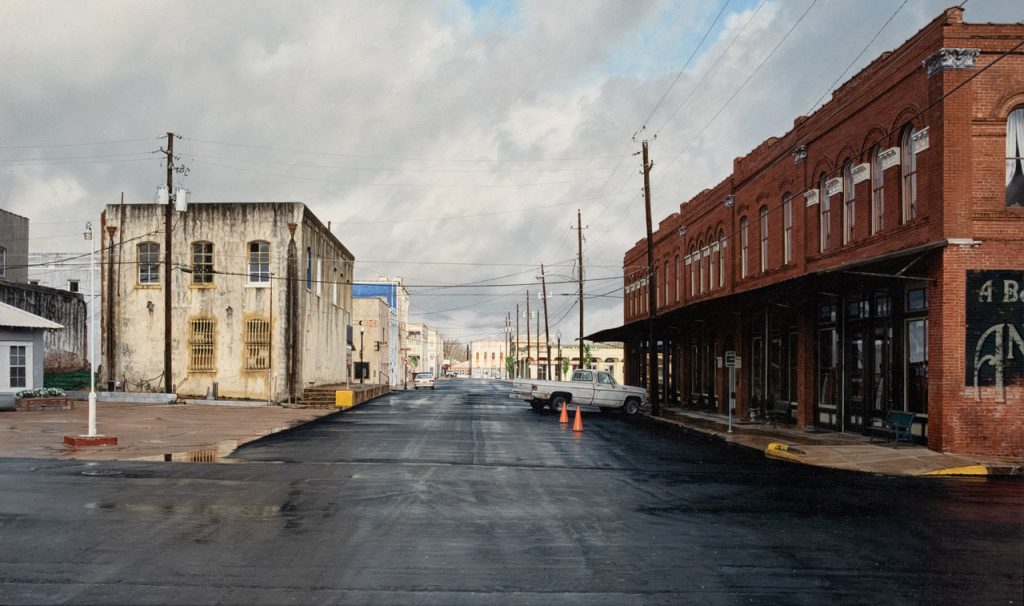
Rod Penner, Yellow Light / Brenham, TX (2004–05). Courtesy of Louis K. Meisel Gallery.
Your exhibition “Small Town Meditations” opens this month, can you tell us a bit about the works in the show?
This exhibition is a little unusual in that there is a mix of recent and early paintings, some dating as far back as 1999. I’m finishing up the last painting for the show, a local BBQ joint, this week. The subjects include tract houses, street scenes, and townscapes.
My last three shows over the past decade focused mostly on small 6-by-6-inch paintings whereas this exhibition will feature larger works ranging in size from 12 by 18 inches to 34 by 64 inches.
The exhibition coincides with the release of a monograph of your work between 1987 and 2022. What was it like looking back at over three decades of your work? Did you derive any new insights?
It was interesting to see the subtle shifts that took place over the course of 35 years. When I received an advance copy of my book from the Artist Book Foundation, it was both satisfying and humbling to hold in my hands a record of my life’s work. We’ve been laboring on this project for almost two years and to see it finally come to fruition is exciting. This monograph is the crowning achievement of my career as a painter thus far, and I’m grateful to have this permanent record of my paintings as a legacy for my children and grandchildren.
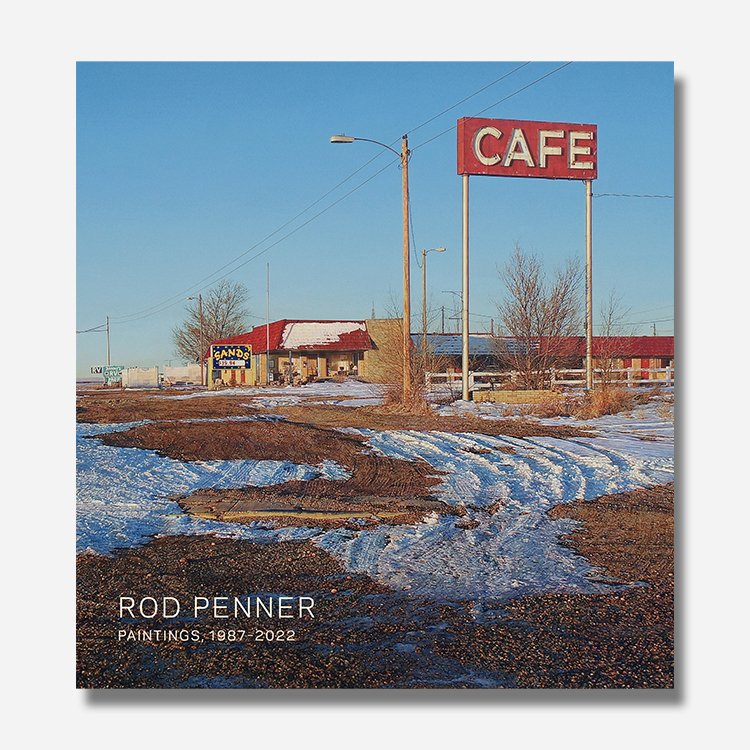
Rod Penner: Paintings, 1987–2022. New York: The Artist Book Foundation (2023).
What do you want viewers of your work to take away with them? What do you hope to inspire?
I would like viewers to experience a moment of spirituality or transcendence. At the very least, I hope viewers gain a newfound awareness and appreciation of their surroundings; the inspiration to see the world around them with new eyes—to search out beauty and mystery in even the most unlikely places.
Can you tell us about what you are working on now or next? Are there any subjects or themes you want to engage with that you haven’t yet?
I am currently in the beginning stages of a large 6-foot painting featuring a wintry scene of Llano, Texas. I also recently completed a small painting of a country café interior, which has sparked an interest in photographing and painting more interior views found in a wide variety of small-town buildings.
If you weren’t a painter, what would you be?
I don’t think in those terms. I am what I was born to be.
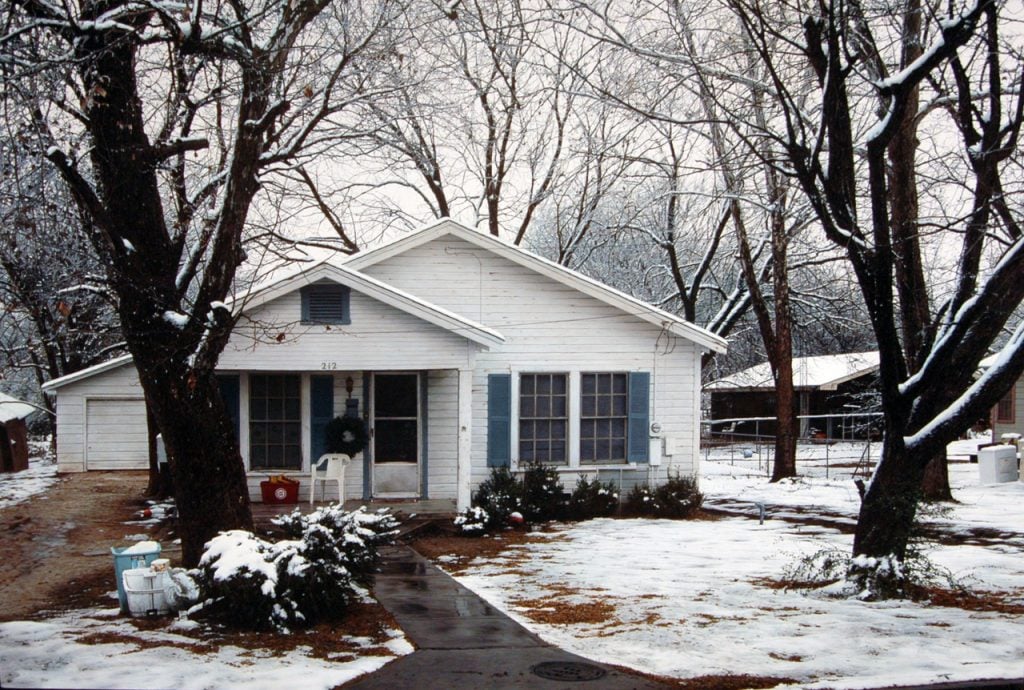
Rod Penner, House with Snow (1998). Courtesy of Louis K. Meisel Gallery.
“Rod Penner: Small Town Meditations” is on view at Louis K. Meisel Gallery March 18–April 29, 2023.
